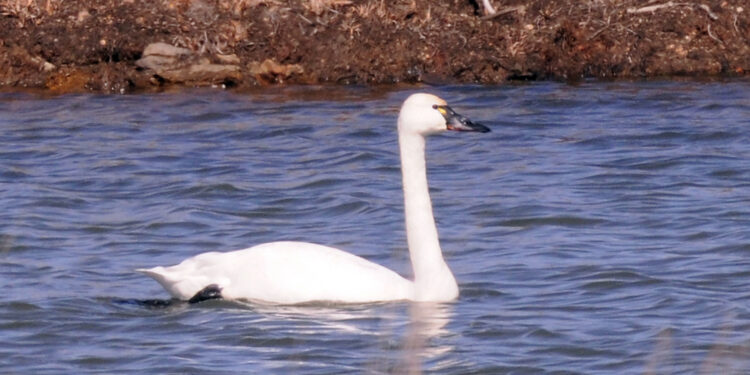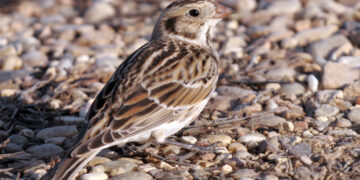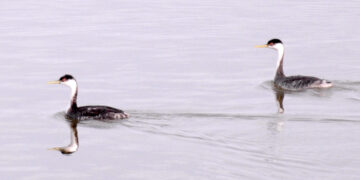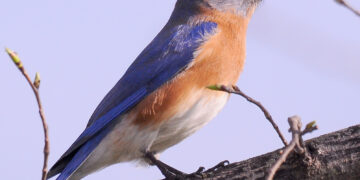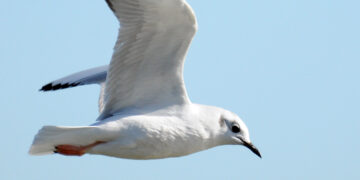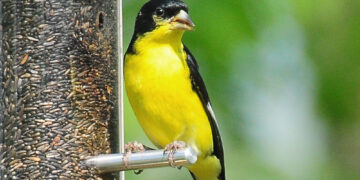Something occurred recently that led to me writing a column about this week’s featured creature, the tundra swan.
This bird can only be seen in this area during the winter, and even then, it’s quite rare. However, swans seem to be irruptive this year and are being reported all around Oklahoma and even parts of Texas.
I would say normally, most sightings of swans in Oklahoma — both tundra and trumpeter, an even rarer species in these parts — occur well north of Interstate 40.
However, someone recently reported seeing a tundra swan in Johnston County, a few miles north of Tishomingo, which is in south-central Oklahoma.
I made the trip there and observed the swan, and what a sight it was!
It was the closest I’ve been to a tundra swan yet, but I didn’t get close enough to get great photos. But the ones I did get will do for now.
I could have probably gotten a little closer, but I would feel bad if I scared the swan away.
And to be honest, just sitting there watching such a majestic bird was pretty great.
In some areas of North America, these huge white birds are fairly common, while in others, seeing one is next to impossible.
For me, in addition to admiring the beauty, the rareness makes it even more magical.
The tundra swan is indeed a large bird but is slightly smaller than the other two swan species found in North America, the trumpeter swan and the mute swan.
For those in the United States and even much of Canada, eh, this bird can only be seen either during migration or in winter.
As its name indicates, it nests in the arctic tundra from Alaska west through the Northern Territories.
The Cornell Lab of Ornithology reports that Lewis and Clark provided the first written description of the tundra swan during their expedition to the American West.
A characteristic whistling in their wings led Meriwether Lewis to call them “whistling swans,” a name that is still in use.
The National Audubon Society reports the North American population is often called “whistling swan,” while the European version is called “Bewick’s swan.”
Appearance
As mentioned previously, the tundra swan is a huge bird with a long neck. Adults are pure white, aside from their black bills and legs.
They measure from 48 to 58 inches in length and have wingspans up to 5’ 6”.
They have black bills, often with a spot of yellow at each side of the base, near the eyes. The bill slopes gently away from the head.
Older juvenile birds have pale dusky-brown coloring with extensive white highlights and a mostly pink bill with black on the tip and base.
These birds have a distinctive straight-necked posture.
Range
They typically winter in the American West and along the East Coast. It’s not unusual for some individuals to stray to the middle of the country, but they are considered rarities here.
The National Audubon Society reports that southward migration begins in about mid-autumn.
Habitat
Winter habitat includes shallow lakes, wide slow-moving rivers and coastal estuaries, especially those with agricultural fields nearby.
Food
These birds eat a variety of aquatic vegetation, but also mollusks and arthropods. During the winter, they also visit agricultural fields for food such as corn, soybeans and rice.
I recently watched an individual feeding in a shallow lake, and it was plucking underwater vegetation from the bottom of the reservoir.
To feed underwater, these big birds upend with tails up and heads straight down. They can reach an amazing three feet below the surface. During migration and in winter, they will also feed on land in open fields.
Odds and ends
To watch a video I made concerning the tundra swan, please visit https://www.youtube.com/watch?v=jFaiVUiS6Po&t=3s. And don’t forget to subscribe. It’s free!
The Cornell Lab reports that based on banding records, the oldest known Tundra Swan was a female and at least 23 years, 7 months old when she was identified by her band in the wild in Ohio. She was originally banded in the same state.
Editor’s note: randy mitchell is a freelance writer and photographer. He has been an avid birdwatcher, nature enthusiast and photographer for more than 40 years. Reach him at rnw@usa.com.
Want to reach a local audience and grow your business?
Our website is the perfect platform to connect with engaged readers in your local area.
Whether you're looking for banner ads, sponsored content, or custom promotions, we can tailor a package to meet your needs.
Contact us today to learn more about advertising opportunities!
CONTACT US NOW